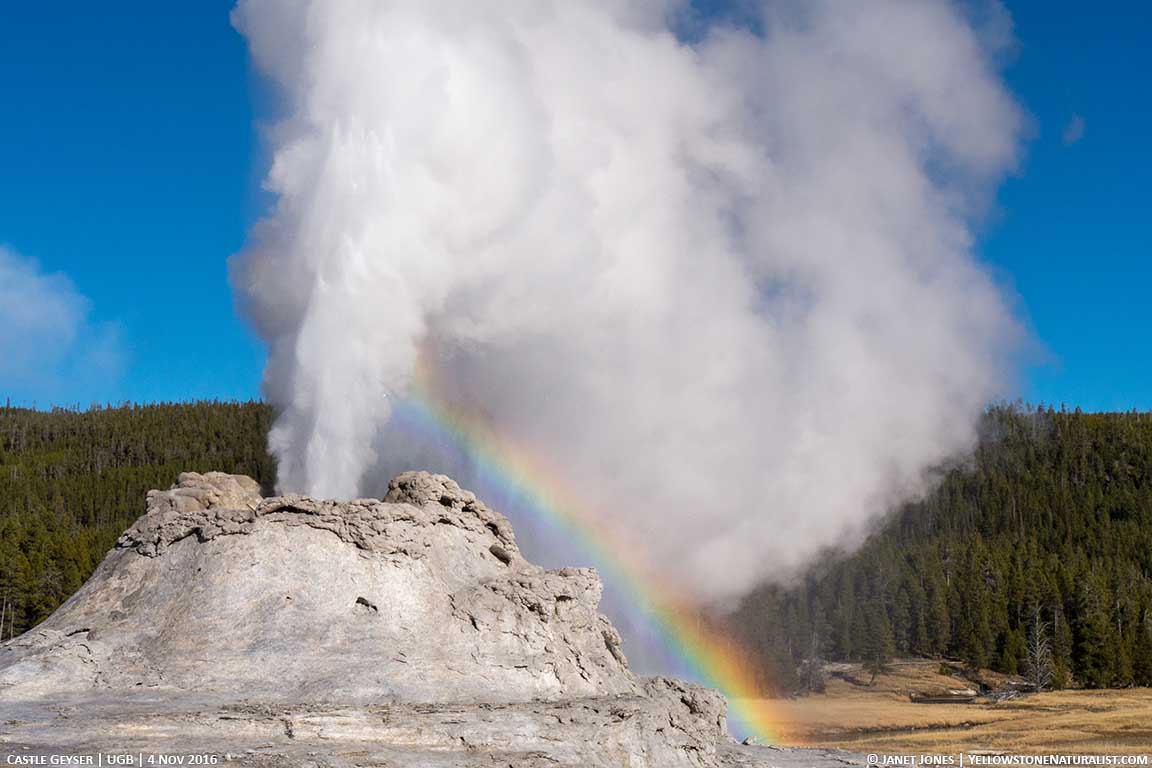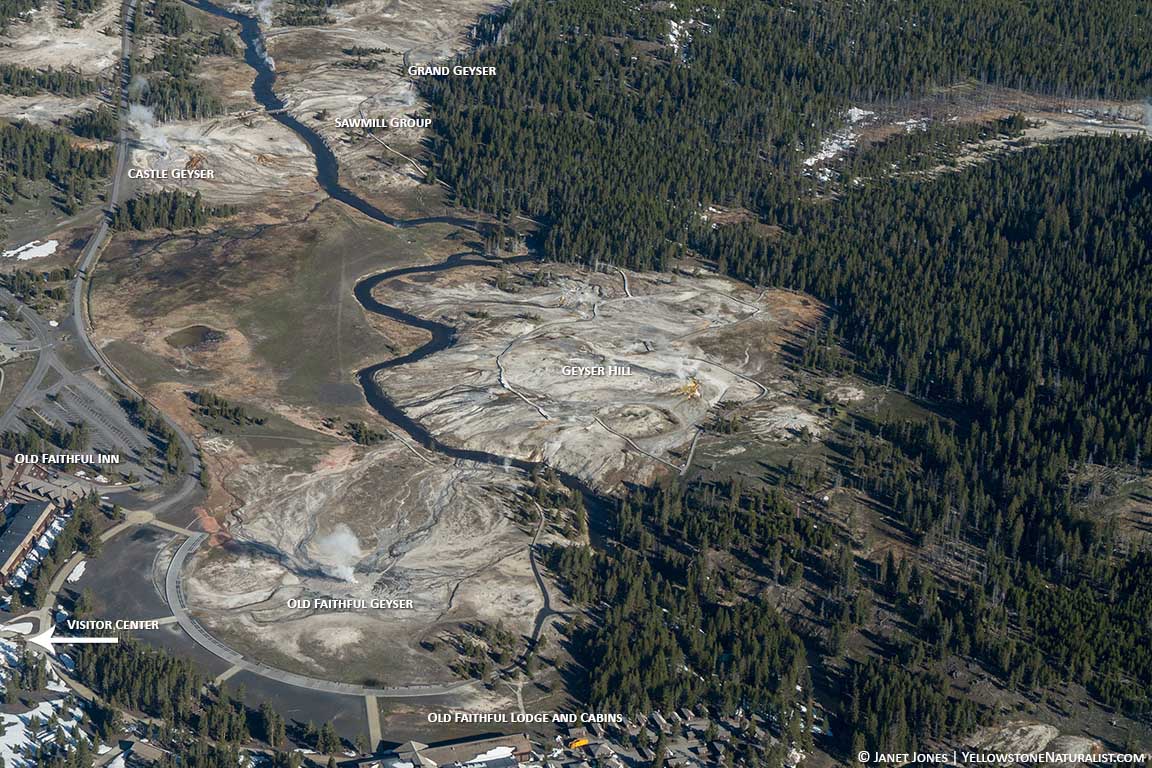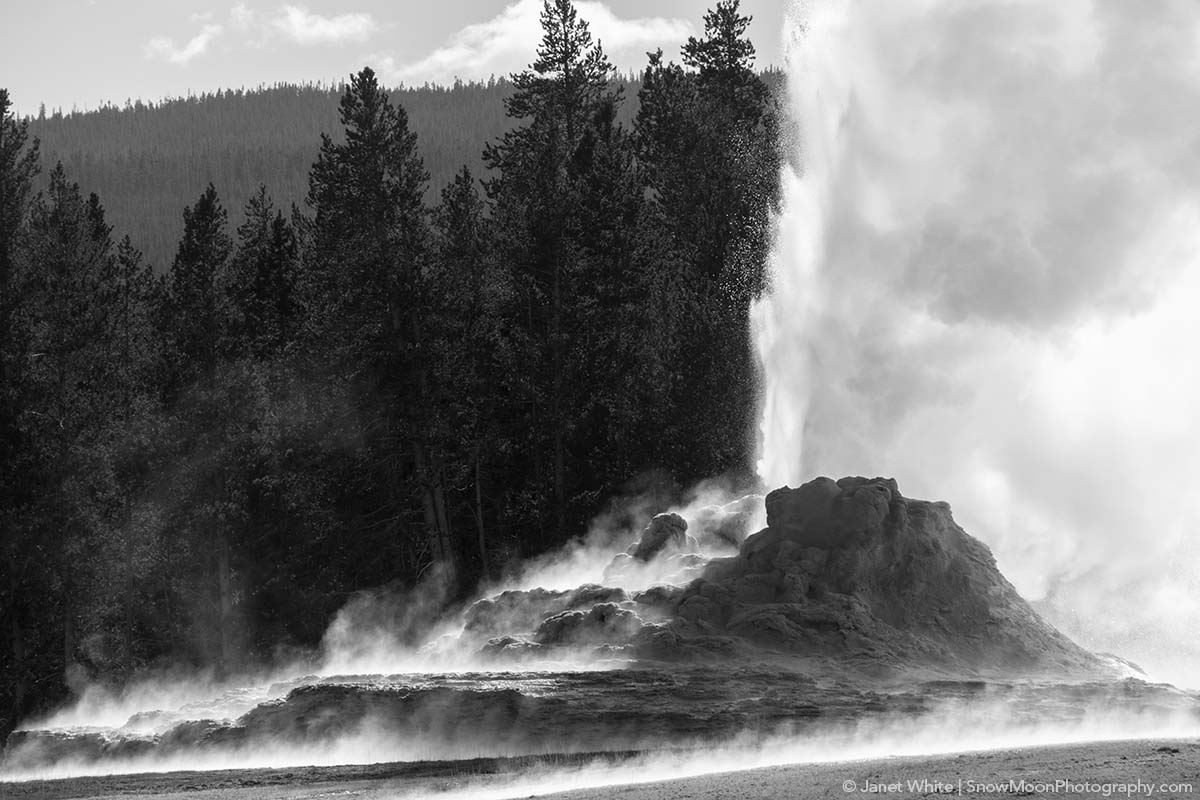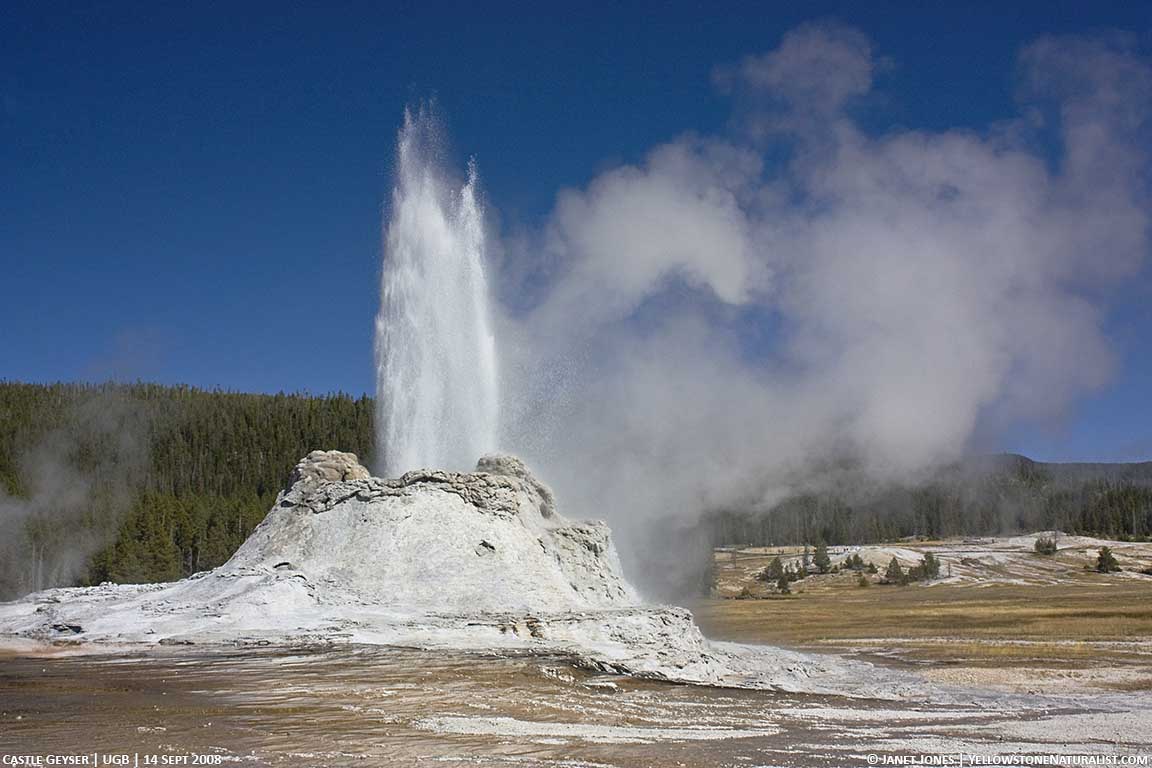Get to know Castle Geyser
Castle Geyser is one of the major geysers in the Upper Geyser Basin and it’s eruptions are predicted. Generally you can expect Castle Geyser to erupt once a day during the daylight hours. In this article we’ll take a closer look at this amazing geyser.
THE BASICS OF CASTLE GEYSER
- Usually erupts every 12-14 hours (unless it has a minor eruption).
- Erupts to a height of about 100 feet, but many bursts are less than that.
- Major eruptions can last up to an hour (including the steam phase) and Minor eruptions stop abruptly during the water phase.
- Castle Geyser is short walk from Old Faithful.
WHERE IT’S LOCATED
Castle Geyser is located a short walk down the paved walking/bike path from Old Faithful. One of the best things about waiting for Castle Geyser are the benches in the shade that also allow you a view toward Grand Geyser and beyond as well as Geyser Hill. In general, it’s a nice place to keep an eye on quite a few geysers from a shady spot.
In addition, when the sun is lower, you have the potential of seeing rainbows in the spray from the steam. Given that the boardwalk allows us to see it from many angles, the ability to get into the right spot for rainbows increases.
HOW ERUPTIONS HAVE CHANGED OVER TIME
Castle Geyser has a unique and large cone that’s unmistakable. It was named by members of the Washburn party in 1870 because the shape of the cone resembles a castle turret. Carbon dating and 3D laser scanning (research conducted by geologist, Duncan Foley) shows that the cone built over four or five different stages over about a thousand years. This shows that one of the only constants with geysers is change. If you look at the base of the cone, you’ll see more horizontal layers of sinter (the name of the rock). This indicates smoother overflow. It takes splashes from the eruptions to create the bumpier texture.
Reports from the first few decades of Yellowstone existence as a National Park shows Castle having a variety of behavior, from splashing nearly continuously, to having major eruptions once every 4 to 8 weeks to erupting once daily. Different types of behavior have been reported as well – from 30-50 foot splashing to powerful full eruptions like we enjoy today.
HOW TO WATCH FOR AN ERUPTION
A few hours before an eruption, occasional splashes start to rise above the cone. While these preplay splashes signal that water has refilled the system, it still may be a few hours until the eruption. It’s best to check to see if there’s a prediction time for Castle. You can check with the National Park Service or Geyser Times.
At times you may not find a prediction. That’s because Castle Geyser has both major and minor eruptions. The minor eruptions throw the system off. The difference between a major and minor eruption depends on the length of the eruption and, more importantly, if the eruption ends with a steam phase.
Major eruptions usually start with an extra-large splash that suddenly shoots skyward up to 100 feet. During the water phase of the eruption, it might look like Castle has stopped, only to shoot skyward again. The water phase of the eruption will last anywhere from 10-20 minutes and then shift over to a loud steam phase. This steam phase can last for a long time, making the entire eruption last about an hour.
Minor eruptions start exactly like major eruptions except they suddenly quit during the first 15-20 minutes of the water phase. Because this eruption uses a portion of the water and energy, it takes longer for the system to finish recharging. While in the past, at least, the length of the minor eruption tied in to the length of time until the next major eruption. All you needed to do was change the minutes of how long the minor eruption lasted to hours to get an approximate time for the next major eruption. So, a four minute minor might delay the next major eruption for four hours. However, a quick glance at some entries from 2018, it doesn’t seem this still holds true. (That might make an interesting study for someone.)
If you have two minors in a row (back to back minors), then all bets are off for when the next major eruption might occur. But once you have a major eruption, the formula used for the predictions works again. At the writing of this, that’s about every 12-14 hours.
IN CONCLUSION
Castle Geyser is a lovely one to see erupting, but just seeing the cone is worth the short walk down the paved walking/bike path. If it’s not close to a prediction time, think about wandering over to Grand or looping back to the Old Faithful area along the boardwalks on Geyser Hill.



